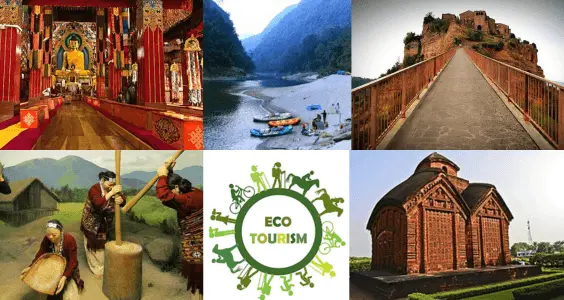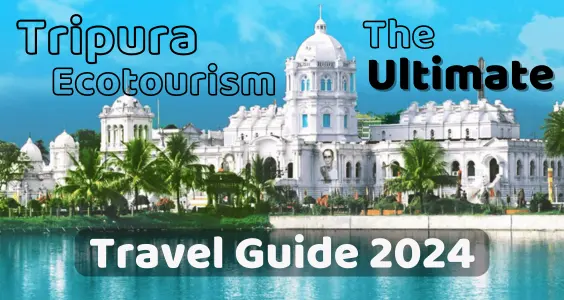For those who enjoy ecotourism, North East India is a sanctuary, renowned for its stunning scenery and rich cultural heritage.
Traveling is beneficial for the soul. It enlarges both our heart and mind. Furthermore, it helps us realize our primary goal in life, which is to love and respect everyone around us and improve both human and animal welfare of the planet. However, every time we prepare for a new trip and pack our luggage, we leave a Footprint.
This footprint includes the resources they purchase to ensure our enjoyment as well as the emissions from every form of transportation they use. Ecotourism is a type of travel where visitors visit natural places responsibly (using sustainable transport), helping to preserve them. Enhancement of the environment and the quality of life of the people living there.
Its goal may be to instill respect for human rights and other cultures, or to educate tourists about the need to finance ecological conservation to directly support the political and economic independence of local populations.
Read our detailed article to understand what is ecotourism

Exploring the World of Ecotourism in North East India
Ecotourism in North East India offers breathtaking untouched scenery, an enlightening and peaceful experience. Part of the Eastern Himalayas, the region is surrounded by hills and mountains. The region is made up of eight states: Nagaland, Assam, Arunachal Pradesh, Manipur, Mizoram, Meghalaya, Tripura, and Sikkim. These states are abundant with natural scenery, folk music, rare culinary traditions and flora and fauna.
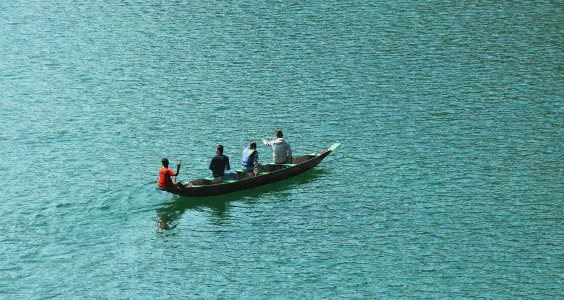
Due to its remote location, the area has poor connectivity despite its natural beauty. Another myth is that it is unsafe for guests. But these states are peaceful and equal to their peace is their natural beauty.
There are many national parks and wildlife sanctuaries in Northeast India. The tribal culture of the area plays an important role in its heritage and attracts a lot of tourists who are interested in learning about the indigenous people and their distinctive lifestyle. Major attractions of Nagaland include fairs and festivals such as the Hornbill Festival and the unique arts and crafts produced locally.
The region offers many opportunities for ecotourism, including adventure activities, jungle safaris, trekking, mountaineering, tea plantation tours and bird watching tours. These activities showcase the natural beauty and cultural richness of North East India, making it an ideal destination for eco-conscious travellers.
What is the best time to visit North East India? Ecotourism place with its own specialty.
| State | Destination | Best Time to Visit | Specialty |
| Assam | Kaziranga National Park | November to April | Famous for one-horned rhinoceroses, tigers, elephants, and rich biodiversity |
| Manas National Park | November to April | UNESCO World Heritage site, tigers, elephants, river rafting, and bird watching. | |
| Nameri National Park | November to April | Bird watching, river rafting, trekking, and diverse wildlife. | |
| Arunachal Pradesh | Eaglenest Wildlife Sanctuary | October to April | Diverse animal population, rare bird species |
| Ziro Valley | March to October | Blue pine and bamboo plantations, treks, bird watching, Ziro Butterfly Meet | |
| Talley Valley Wildlife Sanctuary | March to October | Endangered flora and fauna, scenic beauty | |
| Manipur | Keibul Lamjao National Park | October to April | Only floating national park in the world, home to the endangered Sangai deer |
| Loktak Lake | October to March | Largest freshwater lake in Northeast India, phumdis (floating islands), bird watching, boating | |
| Meghalaya | Mawlynnong Village | October to April | Cleanest village in Asia, living root bridges, eco-friendly practices |
| Cherrapunji (Sohra) | October to April | Living root bridges, waterfalls, caves, high rainfall | |
| Nokrek National Park | October to March | Biosphere reserve, red panda habitat, diverse flora and fauna | |
| Mizoram | Dampa Tiger Reserve | November to March | Tigers, leopards, clouded leopards, diverse bird species |
| Phawngpui Blue Mountain National Park | November to March | Highest peak in Mizoram, blue mountains, rare orchids, bird watching | |
| Nagaland | Khonoma Village | October to May | First green village in India, terraced farming, rich Angami Naga culture |
| Intanki National Park | November to April | Rich biodiversity, hoolock gibbons, elephants, bird watching | |
| Tripura | Sepahijala Wildlife Sanctuary | October to March | Clouded leopards, spectacled monkeys, botanical garden, zoo |
| Gumti Wildlife Sanctuary | November to March | Elephants, sambar, wild goats, rich flora and fauna | |
| Sikkim | Khangchendzonga National Park | March to May, September to Novembe | UNESCO World Heritage site, Mt. Khangchendzonga, diverse flora and fauna, trekking |
| Yumthang Valley | February to June | Known as the ‘Valley of Flowers’, hot springs, diverse flora | |
| Khecheopalri Lake | March to May, September to November | Sacred lake, pristine environment, bird watching |
Northeast India, officially the North Eastern Region, is the easternmost region of India representing both a geographic and political administrative division of the country. It comprises eight states—Arunachal Pradesh, Assam, Manipur, Meghalaya, Mizoram, Nagaland and Tripura, and the “brother” state of Sikkim.
Let’s explore the hidden treasures of these 8 North East India states
Look at these 7 sisters and one brother of North-East India from the perspective of ecotourism
Assam
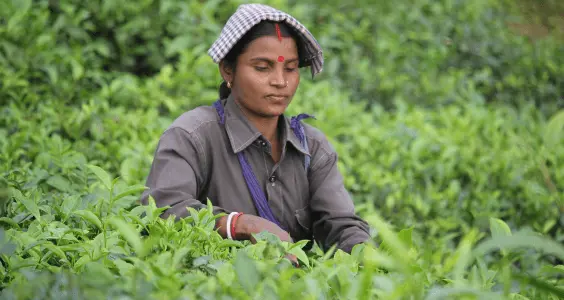
The north-eastern region of India, often referred to as ‘the land of seven sisters and one brother (Sikkim)’, lies in the foothills of the mighty Himalayas, surrounded by hills and mountains. This diverse region is a cultural mix with many ethnic and religious groups contributing to its vibrant tapestry.
With its red rivers, blue hills and lush tea plantations, Assam is widely recognized as the heart and soul of the region. The three primary geographical regions of Assam are the Barak Valley, the Brahmaputra Valley, and the Karbi Plateau and the northern Kachhar Hills that intervene.
Extensive tea plantations, rolling hills, abundant vegetation and wildlife, deep forests, tranquil lakes, winding rivers and waterfalls and picturesque clouds all contribute to the breathtaking landscape of the state. Assam has a fascinating variety of cuisines to choose from, reflecting its diverse population and rich culinary tradition.
Also Read- Most beautiful places to visit in Assam North East India
Also Read- Best Ecotourism Villages in Assam, North East India
Arunachal Pradesh
Arunachal Pradesh, also known as the “land of the dawn-lit mountains”, is a wonderful state in north-east India. It shares its external borders with China, Bhutan and Myanmar through Assam and Nagaland. The state is home to 26 major tribes, and has lush forests with abundant biodiversity and ecological value.
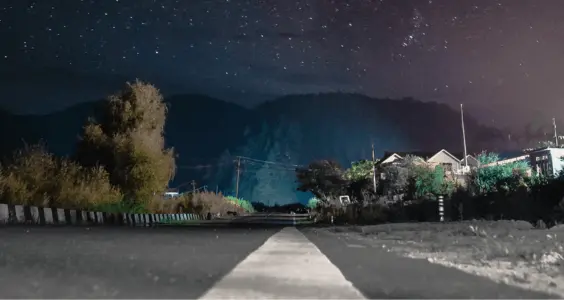
The only state in India whose forests are home to all four major types of big cats – tiger, leopard, clouded leopard and snow leopard – is Arunachal Pradesh. Lesser-known cat species like the marbled cat and the golden cat also call it home. With over 500 identified bird species, the state is a paradise for bird lovers, home to rare species like the Bengal florican and the Sclater monal, as well as the critically endangered white-winged duck.
Also Read- What are the best locations in Arunachal Pradesh to visit?
Community-Based Ecotourism
Thembang Village: Thembang is a historical village in West Kameng district that has adopted community-based ecotourism. In addition to supporting regional conservation initiatives, visitors can connect with traditional culture. Eaglenest Wildlife Sanctuary is famous for its diverse animal population and a large number of unusual bird species. It is located in West Kameng region. It is a popular place for nature lovers.
Scenic Treks and Natural Attractions
Ziro Valley: Surrounded by bamboo and blue pine plantations, Ziro Valley is a goldmine of breathtaking views. It offers a variety of activities, including bird watching tours, Ziro Butterfly Meet, Hakhe Tari Trek, Tali Valley Trek and Pamu-Yalang Trek.
Another must-see place in Arunachal Pradesh is the Tally Valley Wildlife Sanctuary, which is famous for its rare and endangered plants and animals. It offers a tranquil environment to both adventure seekers and enthusiasts of the natural world.
Arunachal Pradesh offers a distinctive ecotourism experience with its diverse animals, rich cultural heritage and stunning landscapes. The state offers incredible experiences that encourage eco-friendly tourism, whether you’re spotting endangered animals, hiking in picturesque valleys, or visiting historic communities.
Manipur
The small landlocked highland state of Manipur is home to approximately 30 lakh people and consists of ten hill districts and six valley districts, covering a total area of 22,327 sq km. Manipur has been a major center of ecotourism since prehistoric times. When Luwang Ningthau Punshiba ruled, the first traditional ecotourism destination was “Chiaro-Ching” of the Langol sacred mountain range.
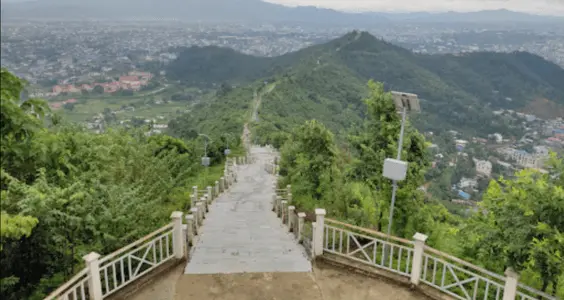
Manipur, a stunning state in Northeast India, is famous for its unusual customs, picturesque scenery and rich cultural heritage. It offers a wide range of tourist sites including Churachandpur, Shirui Kashong Peak, Ukhrul, Moirang, INA Memorial, Kangla Fort, Ima Keithel (Mother’s Market) and Kebul Lamjao National Park.
Manipur offers a wide variety of tourist attractions ranging from natural beauty and adventure activities to historical sites, leisure and cultural places. Manipur offers activities for all types of visitors, including visiting historic forts, enjoying serene hills and lake views, and getting a taste of the native way of life. Make your plans for this enchanted kingdom and discover its riches.
Meghalaya
Let us know the hidden treasure in the tourism scenario of India, the north-eastern state of Meghalaya, which is also called ‘the abode of clouds’ in Sanskrit. Meghalaya’s history as a tourist destination is more recent than that of ancient cultural sites located in other regions of the country. Meghalaya’s natural beauty, distinct cultural heritage and abundant biodiversity are the main reasons for the state’s growing tourism.
The 1980s and 1990s saw the beginning of discovery of Meghalaya by nature lovers and adventure tourists. After understanding this, the state administration started encouraging eco-tourism. They were drawn to Meghalaya by its unspoiled scenery, waterfalls, caves and traditional festivals.
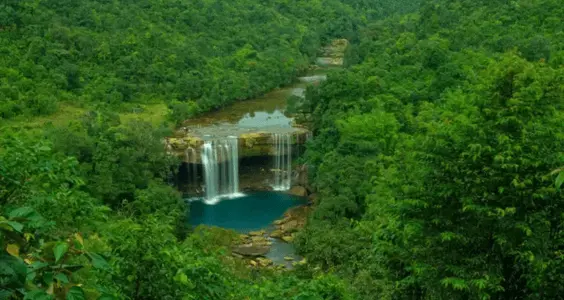
Image credit- iStock
At Witan India Ecotourism,
We guide and help tourists explore popular destinations in Meghalaya, such as:
• Shillong sightseeing
• Cherrapunjee sightseeing
• Trek to the Double Decker Root Bridge in Nongriat
• Visit to Mawlynnong Village
• Visit to Dawki
• Shnongpdeng
• Krangsuri Falls
• Phe Phe Falls
We also suggest, guide, and assist tourists in exploring offbeat locations in remote villages of Meghalaya for unique experiences. For example:
• Shiliang Jashar Village: Trek to a beautiful crystal-clear water stream and waterfall.
• Mawkyrnot Village: Trek to the twin living root bridge.
• Pynursla Market: Explore a lively Khasi village market.
• Umniu-Tmar Village: Discover nearby water streams and nature’s wonders.
• Wahkhen Village: Known for the Bamboo Trail to Mawrynkhang, explore its beautiful interiors with treks to the Living Root Bridge and Suspension Bridge.
• Pynter Village: Settled on a huge rock, enjoy local music with instruments made by the villagers.
We ensure a memorable and immersive experience exploring both popular and hidden gems of Meghalaya.
Mizoram
The Indian state of Mizoram is located in the north-east. Bangladesh and Myanmar are its neighboring countries. Spread over 21,081 square kilometers, this state is divided into 11 districts. The population is approximately 1,091,014 and the capital is Aizawl. The official languages are Mizo and English.
With its hills, tea plantations, waterfalls and wildlife sanctuaries, Mizoram is famous for its breathtaking natural scenery. Although there is tourism in the state throughout the year, but due to the excellent weather, the time from September to March is ideal to visit. The rainy season is not the best time to travel.

Image Credit: Mizoram Official website
The state is famous for its eco-tourism and wide range of delicious cuisine. Given that it is home to a variety of mammals and animals, it is known as the “Land of Mountains”. Six animal sanctuaries and two national parks, including famous places like Murlen National Park and Thorangtlang Animal Sanctuary, are located in Mizoram.
Mizo people perform traditional dances like Sawalkai, Cheraw and Chheihlam. Mizoram is ideal for adventure sports like rafting and paragliding. Phawngpui Peak, Tamdil Lake, Wantwang Falls, Solomon Temple and other tourist sites can all be found in the beautiful town of Lunglei.
Nagaland
Let’s check out our next hidden treasure: Nagaland is a region with 1317 officially recognized villages, out of which 1278 villages are home to 16 different tribes. Every tribe has its own unique traditions, dialect and dress. It is a place of festivals, where each tribe celebrates its own festivals in different months of the year.
Nagaland, also known as the Switzerland of the East, is an ideal place for ecotourism due to its breathtaking scenery, which includes bright sunrises and sunsets, abundance of flora and fauna, rocks, waterfalls, streams, forests, lakes, rivers. And mountains. Rangpahar Reserve Forest, Mount Japhu, Dzukou Valley, Longritzu Lenden Valley, Fusen Kei, Mongzu Caves, Tangkum Marok Spring, Veda Peak, Waterfall, Mount Pauna, Tezu river, Glory Peak, Dzudu lake, Zanibu peak, Shilloi Lake, village caves, stones, Mimi and Salumi geysers, Sukhayap Cliff, Wawade Waterfall, Mihki River of Salt, Mount Saramati, Fakim Wildlife Sanctuary, Lake Aizuto, Aizuto Forest, Ghosu Bird Sanctuary, and Satoi range are all considered environmentally friendly tourist destinations.
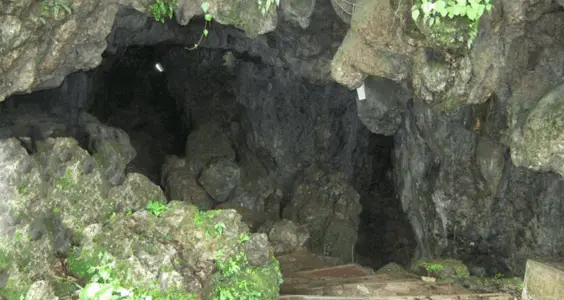
Caves of Mimi
For those who enjoy trekking, wildlife watching and peaceful scenery, these natural treasures offer possibilities. Encourage eco-friendly tourism activities to protect the natural heritage of Nagaland for future generations, while exploring the pristine beauty of Nagaland with its diverse and spectacular scenery.
Tripura
Tripura, the seventh sister of North-East India, is famous for its enchantingly beautiful natural surroundings. The state is home to a variety of animals, rich ecosystems and lush forests.
Tripura is extremely beautiful, with vibrant birds chirping in the blue sky and playful monkeys running around in the lush green forests. Stone carved buildings and artefacts add to the charm of the lakes, which sparkle like precious diamonds in the sunlight. Tripura is a veritable goldmine of natural attractions and creative wonders.
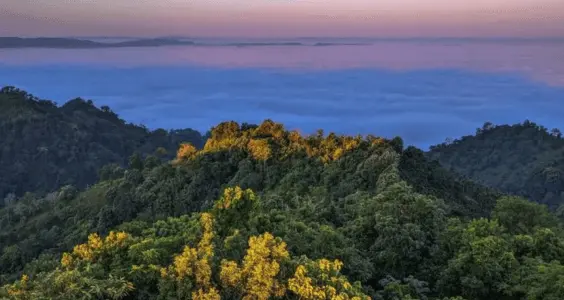
Some of the best places and villages to visit for ecotourism in Tripura include:
• Jampui Hills: Known for its picturesque views, orange groves and vibrant tribal culture.
• Roa Wildlife Sanctuary: A paradise for bird watchers and nature lovers, home to diverse bird species and wildlife.
• Sipahijala Wildlife Sanctuary: Offers opportunities for wildlife safaris, bird watching and nature walks amidst lush greenery.
• Dumboor Lake: A scenic lake surrounded by hills, ideal for boating, picnics, and birdwatching.
• Tribal Villages: Explore traditional tribal villages like Matabari, Tirthamukh, and Chabimura to experience authentic tribal culture, handicrafts, and cuisine.
• Dambur Lake: A beautiful lake surrounded by hills, ideal for boating, picnics and bird watching.
• Tribal Villages: Explore traditional tribal villages like Matabari, Tirthmukh and Chabimura to experience authentic tribal culture, handicrafts and cuisine.
Sikkim
Sikkim, the region of mystery and brother of the seven sisters of Northeast India! Sikkim is not easy to identify on the map. Despite its small size, Sikkim compensates for it with its majestic Himalayan scenery. Melting snow from the peaks forms beautiful waterfalls, rivers and valleys. But the real beauty of Sikkim lies in its diverse Himalayan vegetation and scenery. Nature-based tourism here showcases the unique natural, floral, faunal and cultural diversity of the region.
Sikkim is a mountainous region that has about 28 notable mountain peaks, including the world’s third highest peak, Mount Kanchenjunga and one of the world’s most beautiful peaks, Sinolchu.
The Teesta and Rangeet, Sikkim’s two main rivers, as well as many of their tributaries, flow into these snow-clad mountain peaks. Sikkim’s biodiversity is further enhanced by its 180 lakes found in the alpine and sub-alpine regions as well as some temperate regions.
With 39 species of rhododendron, 558 types of orchids, about 600 bird species, more than 2000 insect species, 658 types of butterflies and about 4000 flowering plants, Sikkim is a paradise for ecotourism.
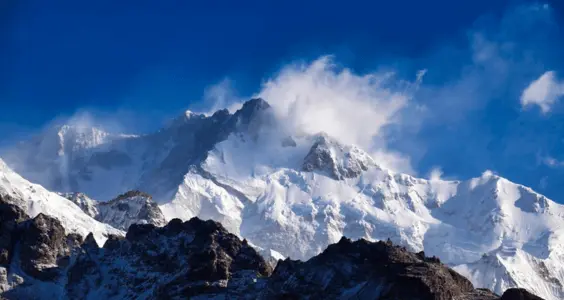
The state has protected parks and sanctuaries where visitors can enjoy nature-based activities:
• Kanchedzong National Park
• Singba Rhododendron Sanctuary
• Fambong Lho Wildlife Sanctuary
• Kyongnosla Alpine Sanctuary
• Maenam Wildlife Sanctuary
• Varsey Rhododendron Sanctuary
Were you aware of this?
Sikkim is the only state in the north-east which does not have a railway system. The state is connected to the rest of the country only by the NH10 highway.

